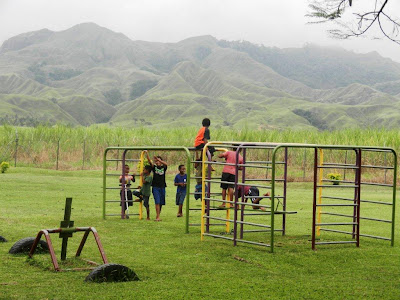Australian rock singer-songwriter, television presenter-reporter, actor, and political activist Angry Anderson returns to Kokoda on Monday to lead a group across the Kokoda Trail with Charlie Lynn of Adventure Kokoda. Angry first trekked Kokoda in 1996 as part of the ‘Angry Anderson Challenge’ which included a group of Australian celebrities led by Charlie Lynn.
The trek was filmed by Channel 9 and screened on the following Anzac Day.
The epic television feature attracted an audience of more than three million viewers and put Kokoda on the map.
Angry returned to the trail a few months later to take a young child, Kennedy Siga from Alola village, to Melbourne for a serious operation on his legs.
Kennedy’s journey also featured on a Channel 9 television documentary.
Angry has always harboured a strong desire to return to Kokoda and trek it again with Charlie Lynn.
They will be joined by another 30 trekkers who will follow the original wartime trail which has been carefully mapped by Charlie over the past five years.
At the time of the Angry’s last trek in 1996 only a handful of hardy trekkers made their way across the Kokoda Trail each year.
There were no accurate maps and the original battlesites were difficult to reach as some had been reclaimed by the jungle.
Others had been bypassed by new tracks and there were no memorials or monuments to identify the significance of the battlesites.
Since Channel 9 put Kokoda on the map with the Angry Anderson Challenge more that 30,000 Australian trekkers have trekked across it in what is becoming one of the most significant pilgrimages they will ever undertake.
There is much more to our shared wartime history than Kokoda. Rabaul, Milne Bay, Buna, Gona, Lae, Finchaffen, Nadzab, Shaggy Ridge, Madang and Wewak are some of the locations that could give rise to a wartime tourism industry that would have no equal in the Pacific.
Kokoda is the gateway and Angry Anderson helped prise the gate open with his epic challenge in 1996.
Angry and Charlie have been supported by Air Niugini who initiated Kokoda 70 to commemorate the 70th anniversary of the war in Papua New Guinea.
 |
| Angry Anderson enjoying a bush buffet along the Kokoda Trail in January 1996 |
The epic television feature attracted an audience of more than three million viewers and put Kokoda on the map.
Angry returned to the trail a few months later to take a young child, Kennedy Siga from Alola village, to Melbourne for a serious operation on his legs.
Kennedy’s journey also featured on a Channel 9 television documentary.
Angry has always harboured a strong desire to return to Kokoda and trek it again with Charlie Lynn.
They will be joined by another 30 trekkers who will follow the original wartime trail which has been carefully mapped by Charlie over the past five years.
 |
| Angry Anderson and Darryl Braithwaite on Kokoda |
There were no accurate maps and the original battlesites were difficult to reach as some had been reclaimed by the jungle.
Others had been bypassed by new tracks and there were no memorials or monuments to identify the significance of the battlesites.
Since Channel 9 put Kokoda on the map with the Angry Anderson Challenge more that 30,000 Australian trekkers have trekked across it in what is becoming one of the most significant pilgrimages they will ever undertake.
 |
| Angry Anderson on This is Your LIfe |
Kokoda is the gateway and Angry Anderson helped prise the gate open with his epic challenge in 1996.
Angry and Charlie have been supported by Air Niugini who initiated Kokoda 70 to commemorate the 70th anniversary of the war in Papua New Guinea.























